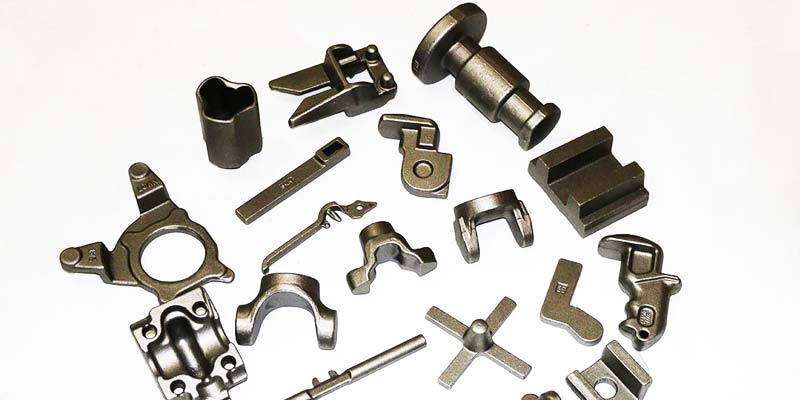- Contact Innally, Let you purchase forgings in China more favorable prices, products more assured!
- Hotline:+(86)15038323776 Email:innally@innally.com
Hardware mechanical forging classification overview
- Category: Metal forging, Titanium alloy forging
- |
- Date: 08/09/2023
field of use and processing technology. Different types of metal mechanical forgings have different characteristics and application range, the correct selection and use of suitable metal mechanical forgings can improve the overall performance and stability of mechanical equipment. In practical applications, it is necessary to select the right type of hardware mechanical forgings according to the specific requirements and conditions of use, and customized design and production according to the actual situation.
Product Details
Metal forging is an important industrial component, widely used in a variety of mechanical equipment and systems. According to different classification standards, hardware mechanical forgings can be divided into various types. This paper will introduce the classification method of metal mechanical forgings according to material, shape, field of use and processing technology.
First, classification by material
Gray iron forgings: Gray iron is a material with high strength, hardness and wear resistance, often used to make parts that withstand loads.
White iron forgings: White iron is a material with extremely high hardness and wear resistance, which is often used to make wear-resistant parts and parts that withstand high loads.

Pig iron forgings: Pig iron is a material with lower carbon content and higher casting properties, which is often used to make large castings and structural parts.
Wrought iron forgings: Wrought iron is a type of steel that has been repeatedly wrought and annealed, has high strength, toughness and wear resistance, and is often used in the manufacture of demanding parts.
2. Classification by shape
Cylindrical forgings: Cylindrical forgings refer to cylinders with axissymmetric shapes, which are often used to manufacture various shaft, sleeve and bolt parts.
Square forgings: Square forgings refer to bodies with four right angles and four planes, which are often used to manufacture various parts such as brackets, bases and frames.
Rectangular forging: Rectangular forging refers to the distance between two parallel planes is less than the distance between the other two parallel planes, often used to manufacture a variety of plates, covers and baffles and other parts.
Elliptic forgings: Elliptic forgings refer to ellipsoids with axissymmetric shapes, which are often used to manufacture various gear, worm gear and sprocket parts.
Rectangular forging: Rectangular forging refers to a body with four right angles and two parallel planes, often used to make a variety of brackets, beams and pillars and other parts.
3. Classification by field of use
Construction machinery forgings: Construction machinery forgings refer to forgings for various types of parts in construction machinery equipment, such as excavators, loaders, rollers and cranes.
Auto parts forgings: Auto parts forgings refer to forgings for various parts in automobiles, such as engines, chassis, suspension and brakes.
Construction machinery forgings: Construction machinery forgings refer to forgings for various types of parts in construction machinery equipment, such as tower cranes, mixers and pumping machines.
Electrical equipment forging: Electrical equipment forging refers to the parts used in various electrical equipment, such as motors, generators, transformers and reactors and other equipment forgings.
Four, according to the processing technology classification
Manual forging: Manual forging refers to the forging completed by manual operation, the accuracy and quality of such forging is greatly affected by the technical level of the operator.
Automatic forging: Automatic forging refers to the forging completed by CNC machine tools, automatic forging machines and other automatic equipment, the accuracy and quality of such forging is greatly affected by the accuracy of equipment and program control.
Semi-automatic forging: Semi-automatic forging refers to the forging completed by semi-automatic equipment, and the accuracy and quality of such forging are greatly affected by the technical level of the operator and the accuracy of the equipment.
Fully automatic forging: Fully automatic forging refers to the forging completed by the automated production line, and the accuracy and quality of such forging are greatly affected by the equipment accuracy and production line program control.
This paper introduces the classification method of metal mechanical forgings, including the classification according to material, shape, field of use and processing technology. Different types of metal mechanical forgings have different characteristics and application range, the correct selection and use of suitable metal mechanical forgings can improve the overall performance and stability of mechanical equipment. In practical applications, it is necessary to select the right type of hardware mechanical forgings according to the specific requirements and conditions of use, and customized design and production according to the actual situation.
nannan
INNALLY website editing, to provide you with forging related information
Related Products
Search
Forging center
- Steel forgings
- Aluminium alloy forging
- Titanium alloy forging
- Stainless steel forging
- Copper forging
- Automotive forgings
- Locomotive forging
- Bicycle forgings
- Motorcycle forging
- Rigging and fasteners
- Bearing forging
- Electric power fittings
- Marine forging
- Mechanical forgings for metalworking
- Mining machinery forgings
- Marine engineering forgings
- Construction machinery forgings
Popular product

© 2025. All Rights Reserved.






